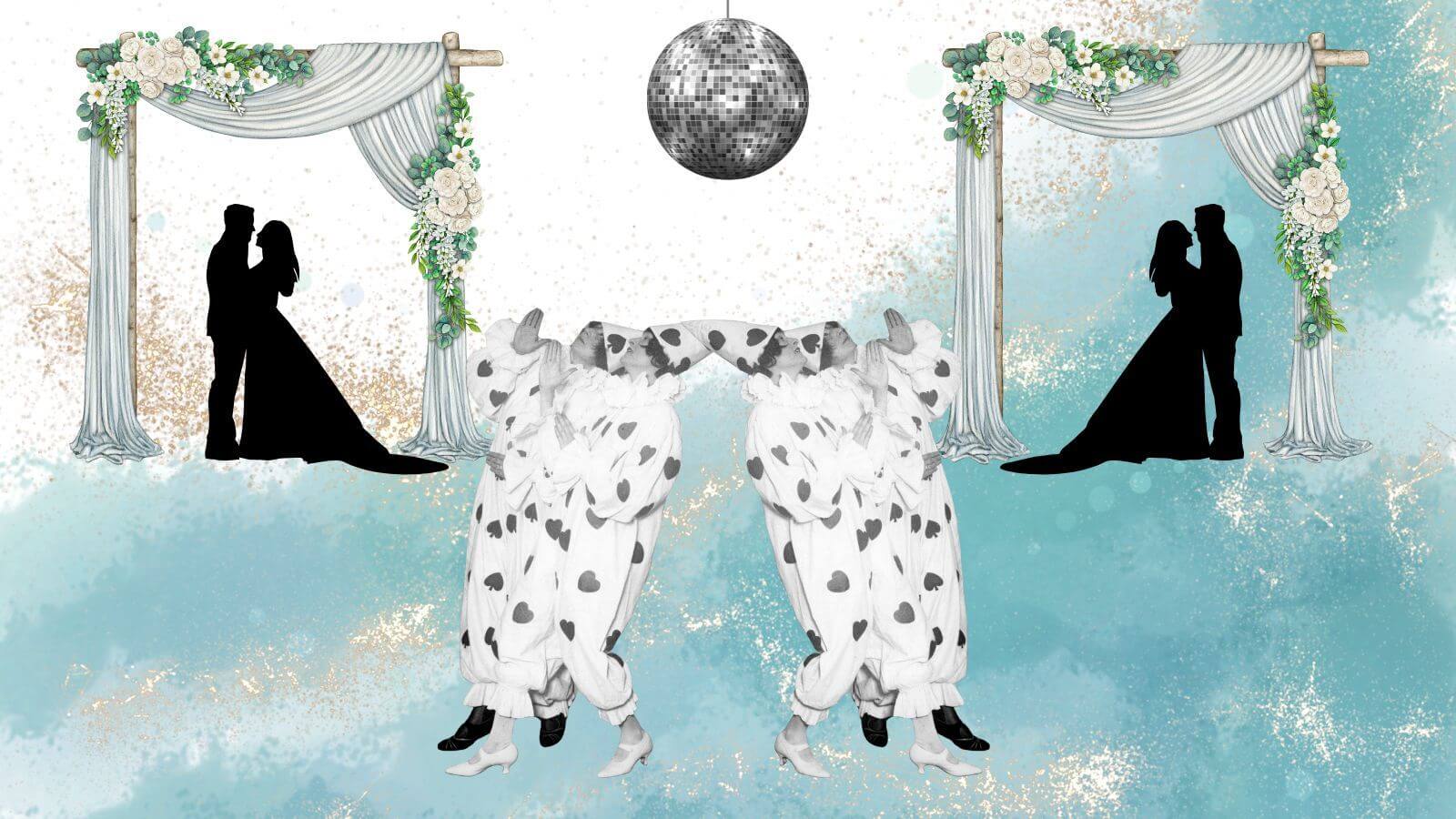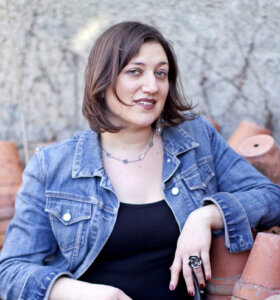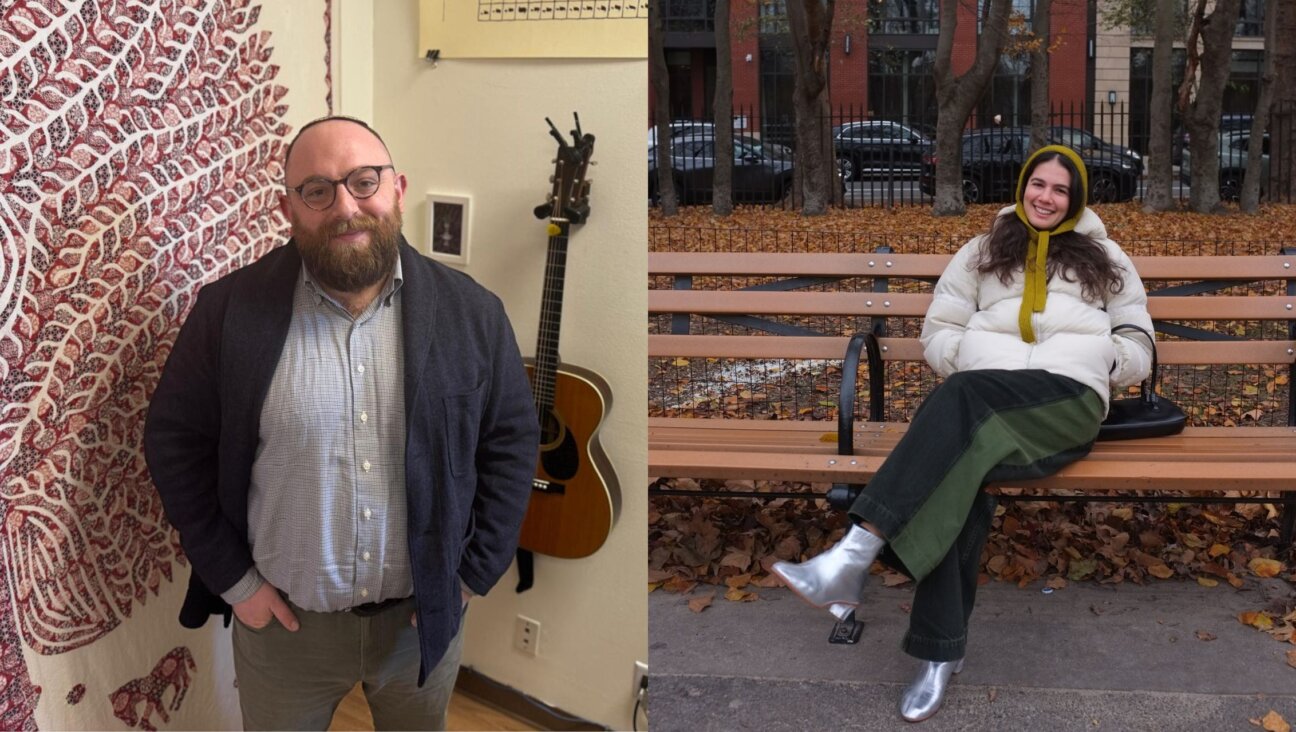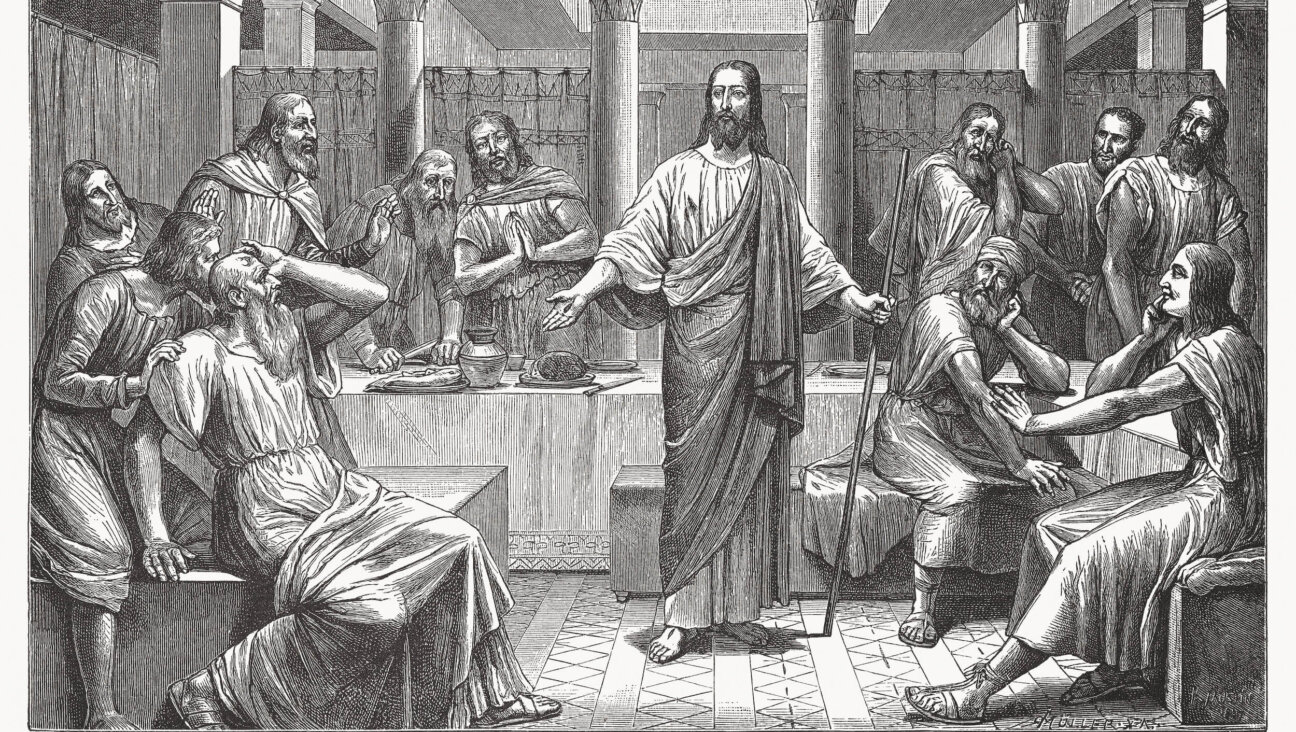It’s a classic Yiddish saying — but did it come from a biblical story about Jesus?
The origins of the phrase ‘you can’t dance at two weddings with one behind’ has uncertain origins, but one scholar has a surprising idea

Yiddish has the perfect phrase if you happen to be invited to two weddings on the same day and are struggling with how to RSVP. Photo by Mira Fox/Getty Images
With wedding season upon us, it’s the perfect time to use my favorite Yiddish saying — mit eyn tokhes ken men nit tantsn af tsvey khasenes, or “You can’t dance at two weddings with one behind.” Tokhes (or tuches, depending on who’s in charge of the transliteration) is borrowed from the Hebrew tachat, meaning “under” or “below.”
This is the ideal phrase to use if you happen to be invited to two weddings on the same day and are struggling with how to RSVP yes to one and no to the other.
More broadly, the saying is about not being able to do two things at once. And in our era of incessant multitasking, this very visual and hilarious Yiddish saying says it all.
I wasn’t too surprised when every Yiddishist I contacted said they use the two-wedding saying frequently — in all its glory, in abbreviated form, or in related, more-polite versions.
“I use this expression all the time,” said scholar and translator Sebastian Schulman, an avid dancer who is also the director of special projects and partnerships at the Yiddish Book Center.
“The expression essentially means ‘you can’t be in two places at once,’ usually referring to two happenings occurring at the same time that you’d like to attend. Sometimes it can refer to the fact that you can’t do everything all at once either,” Schulman said.
I wondered when this phrase started to enter conversations.
“I think I first heard the phrase in Sheva Zucker’s Yiddish textbooks as a student a million years ago, but it’s very common.” said Jessica Kirzane, who teaches Yiddish at the University of Chicago and is the editor-in-chief of In geveb: A Journal of Yiddish Studies.
I tried hard to pin down an origin, but it wasn’t easy. One guess I heard from a prominent Yiddishist was “probably from Eastern Europe.” But I wanted to know more.
Variations in other languages
The singer, musician, and ethnomusicologist Michael Alpert, who is based in Scotland, noted that “the expression is not only in Yiddish. In German, the expression is ‘you can’t ride on two horses with one behind,’ and there is a similar saying in Russian. In Yiddish, we also say ‘you can’t sit on two chairs with one butt.’”
“The origin in the sense of who came up with it is lost in the mists of time,” said the linguist Michael Wex, an authority on Yiddish who is a native of Lethbridge in Alberta, Canada. “All I can say is that originally there were two competing proverbs that mean the same thing — you can’t dance at two weddings with one pair of legs, and you can’t sit on two chairs with one tukhes.”
Wex also had an intriguing theory. He said it’s “at least possible” that Matthew 21, in the New Testament, had a role in the saying. While Yiddish speakers probably weren’t reading Matthew, Russian speakers were likely familiar with Matthew 21:7.
That verse, in the New International Version translation, reads: “They brought the donkey and the colt and placed their cloaks on them for Jesus to sit on.”
What happens next is key.
“It actually says ‘he sat there and he rode into Jerusalem,’” Wex marveled, noting that a reader might conclude that Jesus used one tukhes as he sat on two animals.
When I visited the National Yiddish Book Center’s collection, I recall seeing multiple copies of the New Testament translated into Yiddish. If memory serves, I counted 18 copies.
Perhaps maybe some Yiddish speakers — curious about Christianity — did read a bissel Matthew and coined a phrase.
The expression makes the news
Though it’s fun to think about one tukhes on two animals in Matthew, and how that might have made it into Yiddish, I was curious about a verifiable paper trail for Yiddish versions of the saying.
The Forward’s archivist, Chana Pollack, found several variations of mit eyn tokhes ken men nit tantsn af tsvey khasenes in issues published in the 1970s; though it must be said that in this family newspaper, the saying appeared in abbreviated form as tsvey khasenes, or “two weddings.”
The phrase was attached to all kinds of hot-button news stories. For example: “The Saudis Want to Dance at Two Weddings,” “The Progressive Left Dances at Two Weddings,” referring to the former Soviet Union, and “Sadat Dances at Two Weddings.”
Meanwhile, I got used to hearing “all the time” after I asked Yiddishists about how often they refer to weddings and dancing and the eternal problem of having one tukhes for all of it.
“I use the saying all the time, albeit in an abridged form,” said Sasha Senderovich, an associate professor at the University of Washington. “I say ‘you can’t tantsn af tsvey khasenes,’ when commenting on the all-too-frequent problem of double-booking myself for various events.”
An expression perfect for a very online era
Who among us hasn’t made the mistake of double-booking, even with Google Calendar, Outlook reminders, and everything else pinging?
“I tend to omit the first part of the saying for the sake of brevity rather than out of prudishness,” Senderovich added, “and use a different famous saying about another common function of the tokhes — gey kakn afn yam, go take a dump in the sea — as a reply, on social media, to this or that personality saying something ghoulish about politics.”
Senderovich pointed out that our very online era makes the two-weddings-one-tukhes saying especially apt.
“I think the frequency with which I’ve been using the saying about the inability to dance simultaneously at two weddings, itself attests to the increase in opportunities, since the dawn of the Zoom era in early pandemic, to do precisely that,” he noted.
“One can, in fact, go to an interesting talk and a boring faculty meeting at the same time — on two different devices, one and the same tokhes firmly in one’s chair — or work on a collaborative project with a colleague while marinating chicken for dinner, one and the same tokhes prancing about at the kitchen counter,” Senderovich added.
I was exhausted just thinking about it.
And of course, there are wonderful variations of the saying, which is the case for many Yiddish expressions.
For instance, Schulman told me, in case you don’t want to discuss your tokhes, you can go with another tamer anatomical description of your time-management predicament such as “you can’t dance at two weddings with a single pair of feet.”
“My father definitely did not use the word tukhes,” Rukhl Schaechter, editor of the Forverts, said, referring to her late father, the linguist Mordkhe Schaechter.
“The proverb I heard from him and from my other relatives was: ‘Me ken nisht tantsn af tsvey khasines,’ which jokers apparently vulgarized into ‘mit eyn tokhes ken men nisht tantsn af tsvey khasines,’ Schaechter said.
In other words, the proverb “you can’t dance at two weddings” was dramatized — or “vulgarized” — to include the mention of one behind for all that dancing.
More Yiddish for weddings
Of course, there are other fabulous Yiddish wedding expressions.
“You can talk about tantsn af fremde khasenes, ‘dancing at other people’s weddings,’” Wex wrote in a wonderful piece on Yiddish wedding idioms. “This has less to do with party-crashing than with devoting yourself to someone who isn’t really anything to you, while ignoring your own nearest and dearest.”
That, too, struck me as an expression well-suited to our era of online “friends.”
Who hasn’t gotten caught up in “discourse” from people we rarely if ever see and barely know, while forgetting to call an old friend of many decades?
Yiddish is there to remind you to remember who really matters, who really cares about you. And as for tsvey khasenes?
The memorable expression reminds us to prioritize — in other words, to focus on what matters. That’s appropriate in wedding season, and at most other times.
So if you overhear someone making an offhand comment in Yiddish about two weddings, they may be simply saying that they can’t do it all. Or they may be thinking aloud about what we should all be thinking about — who and what matters most.

















